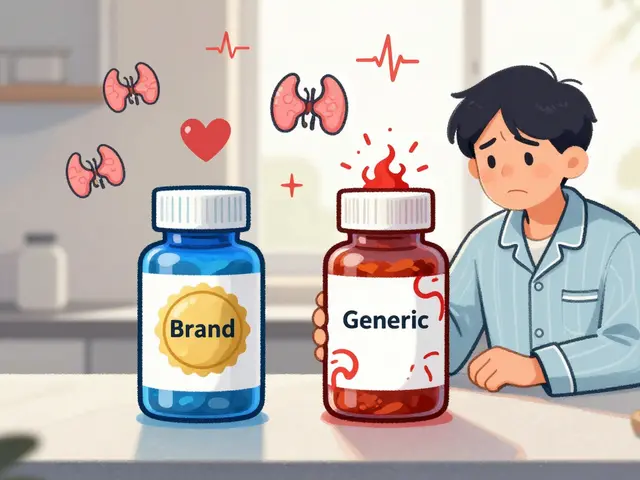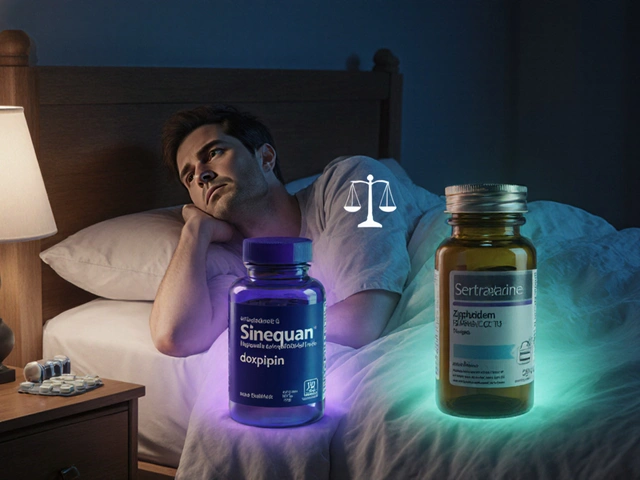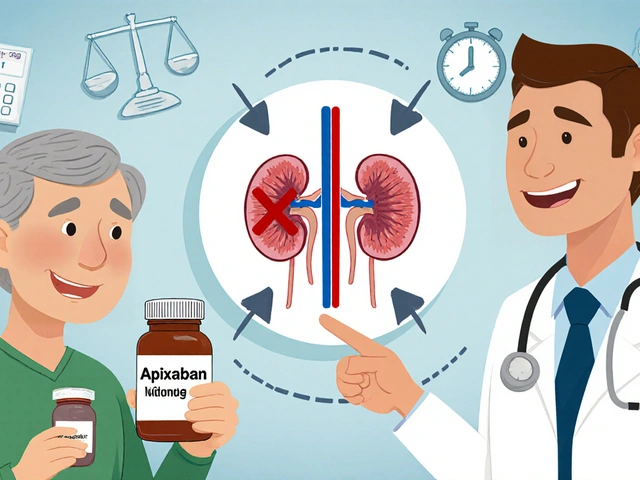Chemotherapy Drug Selection Tool
Select Your Clinical Scenario
Recommended Treatment Options
Key Considerations
When doctors need a versatile chemotherapy or immunosuppressive agent, Cyclophosphamide is often on the table. It’s a classic alkylating drug that’s been used for decades across oncology, rheumatology, and transplant medicine. But it’s not the only player. This guide breaks down how Cyclophosphamide stacks up against the most common alternatives, highlighting when each shines, where they fall short, and what side‑effects you should expect.
Why Cyclophosphamide Remains a Go‑to Choice
First, a quick look at what makes this drug tick. Cyclophosphamide belongs to the alkylating agents class. After oral or IV administration, it’s converted in the liver to active metabolites that crosslink DNA, preventing cancer cells from replicating. The drug also dampens the immune system by targeting rapidly dividing lymphocytes, which explains its role in autoimmune disorders.
- Broad spectrum: works on lymphomas, breast cancer, ovarian cancer, and many non‑malignant conditions.
- Flexible dosing: can be given orally, intravenously, or intraperitoneally.
- Cost‑effective: generic versions keep the price low compared with newer agents.
However, the same DNA‑damage mechanism also drives side‑effects like marrow suppression, nausea, and a rare risk of bladder toxicity (hemorrhagic cystitis). Understanding these trade‑offs is key before picking an alternative.
Top Alternatives to Consider
Below are the most frequently used substitutes, grouped by their drug class and typical indications.
- Ifosfamide - another alkylating agent, often used for soft‑tissue sarcoma and testicular cancer.
- Methotrexate - an antimetabolite that blocks folate pathways; common in leukemia, breast cancer, and rheumatoid arthritis.
- Doxorubicin - a topoisomerase II inhibitor, cornerstone for many solid tumors and Hodgkin lymphoma.
- Azathioprine - a purine analog primarily used as an immunosuppressant in organ transplantation and autoimmune disease.
Each of these drugs brings a unique mechanism, dosing schedule, and side‑effect profile.
Feature‑by‑Feature Comparison Table
| Attribute | Cyclophosphamide | Ifosfamide | Methotrexate | Doxorubicin | Azathioprine |
|---|---|---|---|---|---|
| Drug Class | Alkylating agent | Alkylating agent | Antimetabolite | Topoisomerase II inhibitor | Purine analog |
| Typical Oncology Use | Breast, ovarian, lymphoma | Sarcoma, testicular | Leukemia, breast | Breast, lymphoma, sarcoma | Rarely primary oncology |
| Autoimmune/Transplant Use | Systemic lupus, vasculitis | Limited | Rheumatoid arthritis | Limited | Kidney, liver transplant |
| Administration | Oral, IV | IV | Oral, IV | IV | Oral |
| Key Side‑Effects | Myelosuppression, hemorrhagic cystitis | Neurotoxicity, hemorrhagic cystitis | Liver toxicity, mouth sores | Cardiotoxicity, alopecia | Bone‑marrow suppression, liver enzymes |
| Cost (US, generic) | ~$15 per 100mg tablet | ~$30 per 500mg vial | ~$20 per 2.5mg tablet | ~$200 per 50mg vial | ~$10 per 50mg tablet |
When to Choose Cyclophosphamide Over the Rest
Even with alternatives on the shelf, Cyclophosphamide still wins in several scenarios:
- Broad‑spectrum oncologic protocols: Many classical chemotherapy regimens (e.g., CHOP for non‑Hodgkin lymphoma) rely on Cyclophosphamide as a backbone.
- Oral convenience: For patients who struggle with frequent clinic visits, the oral route eases logistics compared with IV‑only drugs like Doxorubicin.
- Cost constraints: In health systems with tight budgets, the inexpensive generic version is hard to beat.
- Immunosuppression needs: For autoimmune diseases where rapid, potent suppression is required, Cyclophosphamide’s ability to wipe out proliferating lymphocytes is valuable.
In these cases, the benefits outweigh the risks, provided that clinicians monitor blood counts and use protective agents like mesna to prevent bladder toxicity.
When an Alternative Might Serve Better
Switching away from Cyclophosphamide makes sense in the following contexts:
- Neurotoxicity concerns: Ifosfamide carries a higher risk of encephalopathy; patients with pre‑existing neuropathy may need a different alkylator.
- Cardiac health: Doxorubicin’s dose‑dependent cardiotoxicity limits its use in older patients or those with prior heart disease.
- Liver considerations: Methotrexate accumulates in the liver; patients with hepatitis or high baseline liver enzymes are better off with Cyclophosphamide or Azathioprine.
- Long‑term immunosuppression: Azathioprine offers a milder, oral‑only immunosuppressive effect suitable for maintenance therapy after induction with Cyclophosphamide.
Practical Tips for Clinicians and Patients
Below is a quick checklist that helps you decide and manage therapy effectively.
- Assess disease phase: Use Cyclophosphamide for induction; shift to less toxic agents for maintenance.
- Check organ function: Baseline CBC, renal and hepatic panels guide dosing and drug choice.
- Plan for bladder protection: Co‑administer mesna or ensure aggressive hydration when using Cyclophosphamide or Ifosfamide.
- Monitor cardiac status: If Doxorubicin is part of the regimen, obtain baseline echocardiogram and repeat every 2-3 cycles.
- Consider fertility preservation: Alkylators can affect gonadal function; discuss sperm banking or oocyte cryopreservation before starting.
Frequently Asked Questions
Is Cyclophosphamide still used in modern cancer treatment?
Yes. It appears in many standard protocols, especially for lymphomas, breast cancer, and certain sarcomas. Its oral form keeps it relevant for outpatient regimens.
What makes hemorrhagic cystitis a concern with Cyclophosphamide?
The active metabolite acrolein irritates bladder lining. Hydration and mesna, a binding agent, dramatically reduce the risk.
When should I consider switching to Azathioprine?
If you need long‑term immunosuppression after an induction phase, Azathioprine offers a gentler oral option with fewer severe cytopenias.
How does the cost of Cyclophosphamide compare to Doxorubicin?
Cyclophosphamide’s generic price is a fraction of Doxorubicin’s-often under $20 for a full course versus several hundred dollars for Doxorubicin vials.
Can Cyclophosphamide be used for autoimmune diseases?
Absolutely. It’s a mainstay for severe systemic lupus erythematosus, vasculitis, and certain forms of rheumatoid arthritis when rapid disease control is needed.
Bottom Line
Choosing the right chemo or immunosuppressive agent isn’t a one‑size‑fits‑all decision. Cyclophosphamide offers breadth, low cost, and oral flexibility but brings specific toxicities that demand careful monitoring. Alternatives like Ifosfamide, Methotrexate, Doxorubicin, and Azathioprine each fill niche gaps-whether you need less neurotoxicity, a different mechanism, or a milder long‑term suppressor. By matching disease stage, organ function, and patient lifestyle to these profiles, clinicians can tailor therapy for the best balance of efficacy and safety.







kendra mukhia
October 17, 2025 AT 18:56 PMHonestly, anyone still debating whether Cyclophosphamide belongs in a modern regimen hasn't brushed up on the latest NCCN updates. The drug's broad spectrum and cheap price tag make it the unsung hero of many combination protocols. Yet, the toxicity profile-especially hemorrhagic cystitis-means you can't just toss it in without a safety net. Clinicians who ignore mesna prophylaxis are practically courting disaster. So, before you crown any alternative as superior, check the evidence table and remember that cost and convenience often win the day.
Bethany Torkelson
October 21, 2025 AT 06:16 AMEnough with the polite footnotes-this is about lives on the line! If you think a cheap pill can replace a targeted agent, you're underestimating the immune devastation Cyclophosphamide can unleash. The emotional toll on patients dealing with relentless nausea is huge, and we need to face that head‑on. Switches to newer drugs should be justified by clear survival benefit, not just a marketing hype.
Grace Hada
October 24, 2025 AT 17:36 PMThe mechanistic argument is simple: DNA cross‑linking = cell death. No need for poetic flourishes. If an oncologist wants a less toxic regimen, they should pick a drug with a better therapeutic index, not cling to tradition.
alex montana
October 28, 2025 AT 03:56 AMWow!!! This guide is a maze?? It throws stats left right and forgets to say when to stop!!! The dosing table is useful but where's the real‑world patient experience??
Sarah Hanson
October 31, 2025 AT 15:16 PMThe presented comparison table is comprehensive; however, a few typographical errors detract from its professionalism. For instance, the cost entry for cyclophosphamide omits the currency symbol. Moreover, the inclusion of both oral and IV routes in a single cell may cause confusion among practitioners. A revised version with corrected orthography would enhance credibility.
Nhasala Joshi
November 4, 2025 AT 02:36 AMThis entire discourse is a smokescreen conjured by pharma puppet masters. Every line about cost savings hides the hidden agenda of big biotech. They want us to believe Cyclophosphamide is benign while they funnel profits into the "new" agents. The data you cite are cherry‑picked from outdated trials. In reality, the long‑term genotoxicity risk is a ticking time bomb. 🤯 The alleged bladder protection with mesna is nothing more than a marketing myth. Patients are kept in the dark about secondary malignancies. If you glance at the pharmacovigilance databases, you’ll see a surge in late‑onset cancers linked to alkylators. Governments quietly subsidize these drugs to keep healthcare budgets afloat. Meanwhile, alternative therapies are demonized as "experimental". This narrative sustains a cycle of dependency on toxic chemotherapy. The truth is that personalized medicine, with genomic profiling, can spare many from unnecessary exposure. Until regulators demand transparent reporting, we remain pawns in their game. Wake up, colleagues, before the next wave of hidden side‑effects hits our patients.
Wyatt Schwindt
November 7, 2025 AT 13:56 PMPatient safety should always come first.
Lyle Mills
November 11, 2025 AT 01:16 AMFrom a pharmacokinetic standpoint, the oral bioavailability of cyclophosphamide offers a pragmatic advantage in outpatient settings, reducing infusion‑related logistical burdens. Moreover, its metabolite profile, while inherently cytotoxic, can be modulated with adjunctive agents to mitigate organ‑specific toxicity. Integrating this agent into a regimen should consider both therapeutic index and health‑system resource allocation.
Barbara Grzegorzewska
November 14, 2025 AT 12:36 PMHonestly, the so‑called "pragmatic advantage" is nothing but a clumsy excuse for budget‑driven mediocrity. If you truly valued cutting‑edge science, you'd champion agents that target molecular pathways rather than rely on blunt DNA‑alkylation. The casual misspelling in the table reflects a deeper intellectual laziness that pervades this whole discussion.
Nis Hansen
November 17, 2025 AT 23:56 PMPhilosophically, every therapeutic choice is a dialectic between efficacy and toxicity, a balance that defines our clinical art. By embracing a nuanced view, we acknowledge that cyclophosphamide, despite its rough edges, still plays a pivotal role in the therapeutic tapestry. Energetic collaboration across specialties can refine dosing schedules, harness protective agents, and ultimately elevate patient outcomes. Let us not reduce complex oncology to binary judgments but celebrate the continuum of evidence‑based options.
Fabian Märkl
November 21, 2025 AT 11:16 AMGreat points! It's inspiring to see such thoughtful dialogue, and I'm confident that together we can navigate these challenges while keeping the patient at the heart of every decision. 🙌